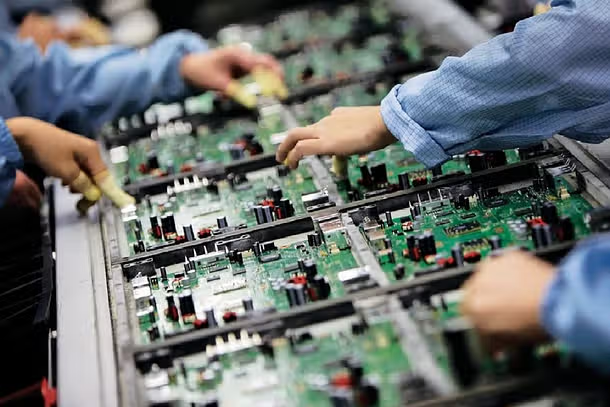 Image Source: Swarajya
Image Source: Swarajya
India has announced a landmark program to reshape its electronics manufacturing industry, rolling out elaborate guidelines for the ₹23,000-crore Electronics Components Manufacturing Scheme (ECMS). The scheme is set to increase domestic production, invite large investments, and make India a world leader in the electronics value chain.
Brief Introduction
On April 26, 2025, the government of India published the long-awaited guidelines for the ECMS, a six-year program with a budget outlay of close to ₹23,000 crore. The scheme aims to increase domestic value addition, promote local design strengths, and establish a strong ecosystem for electronics components manufacturing. The decision comes at a juncture when India wants to grab a greater pie of the global electronics market in the wake of changing geopolitical equations and supply chain reconfigurations.
Scheme Highlights and Objectives
The ECMS will have an overall outlay of ₹22,919 crore and shall be operational for six years (FY 2025-26 to FY 2031-32, inclusive of a gestation period of one year).
The scheme is expected to:
-
Enhance indigenous production of electronic components and sub-assemblies.
-
Lure investments from global as well as domestic players.
-
Integrate Indian companies with global value chains.
-
The government anticipates the scheme to:
-
Attract new investments worth ₹59,350 crore.
-
Generate approximately 91,600–92,000 direct employment opportunities.
-
Facilitate production value of ₹4,56,500 crore.
Eligibility and Assessment Criteria
-
Local design teams and Six Sigma quality standards must be achieved by companies to be positively assessed for incentives.
-
Companies lacking local design teams will be excluded from the scheme's advantages, highlighting the significance of indigenous R&D and innovation.
-
Six Sigma quality is highly recommended, with the government making it clear that only the best standards will be considered.
Scope and Sectoral Impact
-
The scheme is horizontal in nature, and it benefits not only consumer electronics but also the industrial, power, automotive, and medical device industries.
-
Focus areas are passive electronic components (resistors, capacitors, connectors, etc.), while active components are included under the India Semiconductor Mission.
-
The scheme also encourages the capital equipment and tooling industry, and it facilitates the design and manufacturing of precision tools required for electronics production.
Incentive Structure
Three categories of incentives will be provided:
-
Turnover-linked incentives
-
Capex-linked incentives
-
Hybrid incentive model
Generation of employment is a prerequisite for all candidates, emphasizing the government's intention to promote inclusive growth.
Strategic Significance and Anticipated Outcomes
-
The plan is anticipated to raise India's contribution to the global electronics manufacturing value chain to 8% from 3% in the next six years.
-
Production of electronics in India has already quintupled during the last ten years, and exports have grown more than six times, while the new program seeks to double this pace.
-
The ECMS stands as a landmark milestone in the process of India shifting from putting together finished products to reaching levels of deep component manufacturing and enhanced self-reliance.
Sources: Economic Times, Business Standard, Reuters, New Indian Express, PIB
Advertisement
Advertisement




